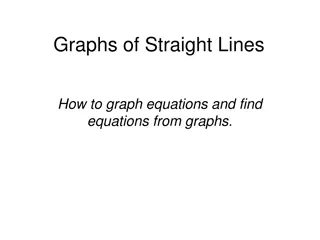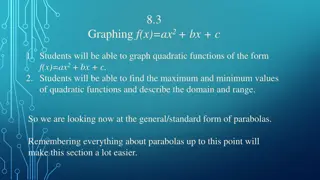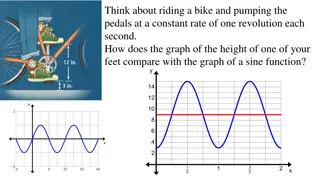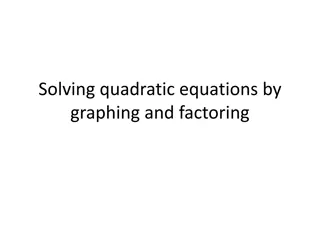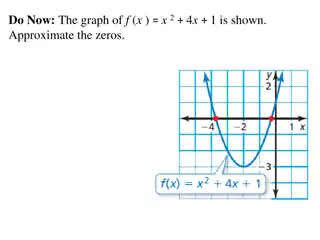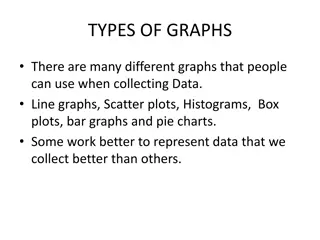
Graphing Sine and Cosine Functions: Understanding Amplitude and Period
Learn how to find the amplitude and period of sine and cosine functions from their graphs, how to write equations for these functions, and how to graph them effectively with key points and phase shifts. Master the essential concepts of amplitude, period, and phase shift for graphing trigonometric functions.
Download Presentation

Please find below an Image/Link to download the presentation.
The content on the website is provided AS IS for your information and personal use only. It may not be sold, licensed, or shared on other websites without obtaining consent from the author. If you encounter any issues during the download, it is possible that the publisher has removed the file from their server.
You are allowed to download the files provided on this website for personal or commercial use, subject to the condition that they are used lawfully. All files are the property of their respective owners.
The content on the website is provided AS IS for your information and personal use only. It may not be sold, licensed, or shared on other websites without obtaining consent from the author.
E N D
Presentation Transcript
GRAPHING SINE/COSINE FUNCTIONS Section 5.4
How to find the amplitude and period when given the graph of a function. 1. The amplitude of the sine or cosine function is half the distance from the maximum height to the minimum height. ??????? ??? ? ??????? ??? ? 2 Amplitude = 3 ( 3) =6 2= 3 2 2. The period is the distance traveled along the x-axis before the graph starts to repeat itself. Period = 0 = |[x-coordinate of one max] [x-coordinate of the next max (to the right)]| OR [x-coordinate of one max] [x-coordinate of next max (to the left)] OR Distance traveled along the x-axis before graph repeats itself (starting at zero)
How to write an equation when given the graph of a sine/cosine function. 1. Determine whether the function is a sine or a cosine function. * sine (y-intercept at 0) * cosine (y-intercept at a max or a min) Sine function 2. Determine A and whether it is positive or negative. * Let A = amplitude * 3. Determine B. period = 2? ? , so B = 2? ?????? (+)sine +A if function is increasing through x = 0 B = 2? ?= 2 (-) sine -A if function is decreasing through x =0 (+) cosine +A if y-intercept is a max 4. Write your equation (filling in A, B, and the type of function). (-) cosine -A if y-intercept is a min y = 3 sin (2x)
Graphing a sine/cosine function Graph y = 3 cos 1 2? 1. A = 3, B = , C = 0, D = 0 6. Identify the 5 key points: ?1= Phase shift = 0 ?2 = ?1+ ????????? = 0 + ? = ? ?3 = ? + ? = 2? ?4 = 2? + ? = 3? ?5 = 3? + ? = 4? 2. Amplitude = |A| = |3| = 3 3. Period = 2? 2? 1/2= 4? ?= 4. Increment = ?????? 4? 4= 7. Plot the ?1 ?5 values on the x-axis = 4 5. Phase shift = 0, because C = 0 8. Plot the A values on the y-axis 9. Identify and plot the pattern





